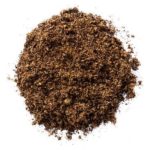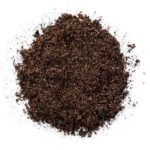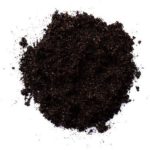Beneficial microorganisms in peat
Peat is the main ingredient in of substrates from Kekkilä Professional. In this article we explain why peat should not be sterilized before use and how microorganisms in this raw material help your crops fight diseases.
The pure origin of peat
Peat is derived from ancient sources of partially decomposed plants, including Sphagnum moss. The likelihood of the presence of plant pathogens in peat is extremely low, because it is harvested in remote areas where no crops have been cultivated at all. Peat develops in a harsh physical and chemical environment.
Because peat is made of decomposing organic matter, it does, however, contain microorganisms like “saprophytes”. These microorganisms are natural and do not harm plant growth. Some even suppress other, pathogenic microorganisms. All this together makes peat a safe growing medium.
Different types of peat
There are different types of peat varying in age and microbial composition. In general the younger, light coloured peat contains high populations of useful bacteria and fungi. The older, dark peat, on the other hand, contains smaller populations of microbes.



Beneficial microorganisms in peat
There are many good little helpers that appear in peat naturally. If we would sterilize peat before use, it would destroy all microbes, including the friendly ones. That would result in an inactive growing medium. If this type of soil would come into contact with plant pathogens in the surrounding air or within the plants itself it could quickly contaminate the peat and make it unsuitable for plant growth.
So, we don’t sterilize the peat. But what do we mean by “beneficial organisms”? In general, beneficial microorganisms in peat help to cycle nutrients through the substrate and have good nutritional effects for the plants. Some others produce things that fight diseases or inhabit the root zone ensuring that plant pathogens can not gain a foothold.
How do these beneficial microorganisms in peat help control plant diseases?
These helpful little organisms have several different mechanisms that actually provide a beneficial effect to plants. Below, we have listed the most common beneficial microorganisms in peat and the way they lend a helping hand:
- Some common bacteria found in peat break down and suppress pathogens like Rhizoctonia and Fusarium, which can cause collar rot and root rot.
- Bacteria like Bacillus and Streptomyces species found in peat produce certain natural antibiotics that prevent harmful bacteria growing in the soil.
- Saprophytic fungi, such as Trichoderma and Peziza species compete for nutrients with other, potentially harmful, microorganisms. This way pathogenic microorganisms like Pythium and Phytophthora would have a much harder time growing.
Do you like to know more about peat and what makes it a great raw material for growing media? Have a look at our previous article “Peat the supreme raw material“.
How to reduce the risk of plant pathogens
So, now we know there are little helpers living in peat, that help reduce the presence of plant pathogens. But what could actually cause plant diseases to gain a foothold? Physical and chemical properties of growing media can have a significant effect on soil born diseases.
- Wetness; If peat is very wet, there is little oxygen available to the roots. This can cause plant stress. Waterlogging can cause damage to the roots, which makes plants more prone to diseases.
- Salinity: High salinity or a very high fertilizer level can cause plant stress and allow pathogenic microorganisms, such as Phytophthora, Pythium and Fusarium species to infect plants.
It’s safe to say it is important that the growing medium is not saline, contains appropriate amounts of fertilizer and drains freely.
Would you like to know more about peat based substrates for your crops? Please contact our distributor in your region!

